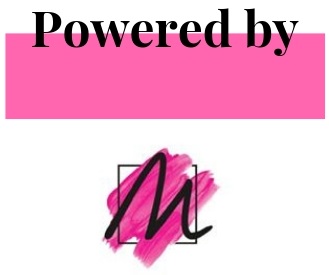With the most recent and biggest music festival that happened over in the US (ahem, yes I mean Coachella for those of you who live under a rock).
We saw some of the most amazing festival fashion along with half of Hollywood’s A-listers...but along with that we also had a fair share of: Cultural Appropriation.
Now, I’m all for music festivals and dressing for the experience but I feel as if sometimes the “privileged” take the festival dressing up a bit too far.
The textbook definition of the word “cultural appropriation”:
“Cultural appropriation is the adoption or use of the elements of one culture by members of another culture. … Often, the original meaning of these cultural elements is lost or distorted, and such displays are often viewed as disrespectful by members of the originating culture, or even as a form of desecration.”
Related Article: 5 amazing times Ayanda Thabethe rocked her natural hair
Meaning that when you; music festival girl wear a bindi on your forehead or an Indian headdress to make a “statement” are you even aware of the meaning behind it? Probably not.
So, next time you consider a music festival maybe consider someone else’s culture as well…while people from third world countries get shamed for their traditions; European women are being praised for it.
Here comes the top most common and offensive cultural items worn to music festivals:
1. “Bindi” Inspired Makeup
Let’s not forget the Bindi being used as an actual facial accessory…

2. The basic henna tattoo…

3. The Kamar Patta aka “Waist Chains”


4. Hamsa symbol accessory (or the Buddha elephant…”ohm” symbol etc).

5. Dashiki Dress
6. Bantu Knots
7. Boxer braids or any traditional hairstyles/accessories for that matter…
Some might just see it as fashion or a trend but living in an age where other cultures and religion are being shamed as terrorists, or ugly for having their natural hair or being made fun of for wearing traditional wear; European cultures are being praised.
And it’s annoying.
So here’s a little meaning behind every little “trend”:
1. The Bindi- The bindi symbolises many aspects of the Hindu culture, but from the beginning it has always been a red dot worn on the forehead, most commonly to represent a married woman.
The bindi is also said to be the third eye in Hindu religion, and it can be used to ward off bad luck.
2. Henna/Menhdi Art– Throughout time, henna has been associated with special celebrations.
Betrothals, weddings, the eighth month of pregnancy, the birth, the 40th day after a woman gives birth, naming ceremonies, etc, are all events celebrated with henna.
Eids, and other religious holidays are also occasions to be hennaed. There are also some healing ceremonies, like the Zar in North Africa, which include its use.
A common practice seen in India and in the Islamic world is the pre-wedding tradition of ‘Night of Henna’ parties, like the Sudanese one described earlier.
3. Waist Chains- Known by it’s original name Kamar Patta. It’s traditionally worn with sarees in India, kamar pattas add beauty to your waist.
It is worn during festive occasions. It is also a quintessential part of an Indian bride’s wardrobe. No bride’s look is complete without a waist chain.
4. Hamsa and “ohm” Symbol- (Hand of Fatima) The Hamsa, the Hand of Fatima and the Hand of Miriam is a popular symbol found throughout the Middle East and northern Africa, particularly within the Islamic and Jewish faiths.
It is one of the national symbols of Algeria and appears in its emblem.
Ohm Symbol- Is a sacred sound and a spiritual icon in Hindu religion. It is also a mantra in Hinduism, Buddhism, Jainism, and Sikhism.
5. Dashiki Dress– a loose brightly coloured shirt or tunic, originally from West Africa. For many people, the dashiki represents a deep cultural connection with the African continent and a joint declaration of pride for their roots.
6. Bantu Knots & Boxer braids- “Bantu knots are a visual reminder of the origins of humanity, which may intrinsically be a key to their charm.”
Black slaves date as far back as the 18th century used these hairstyle to keep their “ethnic” hair in tact or “controlled” while working in the fields etc.
7. Feathers in hair and headdresses- “Before the invasion on their land of the white man, the custom of wearing Indian headdress spread through the many tribes.
However, each headdress varies from tribe to tribe as it represents the culture of each tribe. The individual wearing it would often customize Indian headdresses, thus making it unique to that individual.”
Warriors earn a feather each time they do something the tribe felt was a brave act.
The warrior has to prepare himself to receive such an honour and that often require days of fasting and meditation.
Once he had collected enough feathers, they are then made into a headdress. Because each feather had a special meaning, binding them together in a headdress made that Indian headdress even more special.
Only the men, closest friends of the warrior, were involved in making the headdress.
The Indian chiefs also “earned” each of their feathers. The most prized of all feathers to receive for an Indian headdress was the Golden Eagle feather. Because the Indians saw the eagle as a messenger of God, this feather could only be earned through hardship, loyalty, and strength.
And here you are just frolicking around a music festival with your hair full of feathers…
So, next time you’re getting ready for a music festival or dress up party maybe consider what your “oh so little and harmless” accessories might mean to other cultures.
“My culture is not your trend”.

– Zuhaa Isaacs





